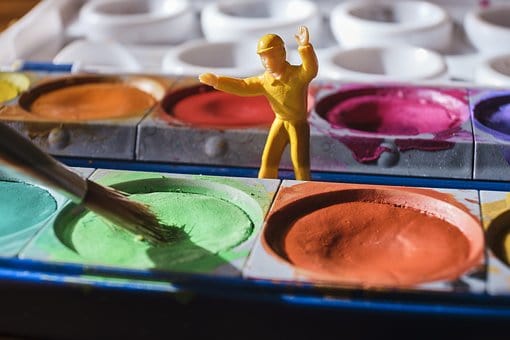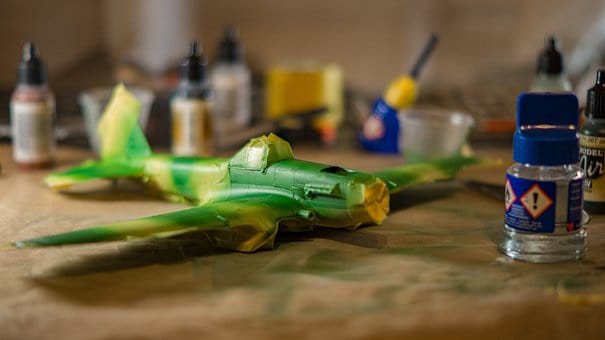Miniature Masterpieces: The Best Acrylic Paints for Your Collection
Are you looking for the best paint to bring your miniatures to life in vibrant color and detail? If so, then acrylics are a great choice! As an experienced miniature painter, I know how important it is to have the right painting supplies - and choosing the best acrylic paint can make all the difference. In this article, I'll share my top tips on selecting quality paints that will help your mini creations stand out from the crowd.
Acrylic paint offers excellent coverage and vibrancy of color when working with miniatures. It's also easy to use and clean up after, making it ideal for beginners and seasoned painters alike. Plus, there are many different kinds available depending on your needs – whatever project you're tackling, there's sure to be one perfect for you! With so much variety though, it can be difficult deciding which paints are worth investing in.
Fortunately, I'm here to provide some expert advice about what makes good-quality acrylic paint for miniatures. From understanding viscosity levels to picking out suitable finishes: by following these guidelines you should have no problem finding the perfect paints for any job!
Definition Of Miniatures
Miniatures are small-scale models of figures and objects that have been sculpted, painted, or crafted to look like the real thing. They come in a variety of sizes and materials, from large tabletop miniatures for gaming purposes to tiny detailed pieces used as dollhouse accessories. As an acrylic paint specialist for miniatures, I've seen all types of creative uses for these miniature works of art!
The most important part about choosing the right paints is making sure they adhere correctly to your chosen material. You want to make sure you choose a paint formula that will not crack or peel over time. To do this, it's best to go with acrylic paint specifically designed for use on miniatures. This type of paint has been created using special pigments that give the miniaturist more control while painting even the smallest details. It also dries quickly enough so that you won't need too many touch-ups along the way.
In addition, quality acrylic paints should be non-toxic and water-based which makes them easy to clean up after each session and safe for kids who may be helping out with projects. With all these factors taken into consideration, let’s move on to exploring what types of acrylic paints work best for miniatures.

Types Of Acrylic Paint
Have you ever wondered what type of acrylic paint works best for miniatures? With so many different kinds available, it can be difficult to determine which one is right for your project. Fortunately, I'm here to help! Let's explore the types of acrylic paint that are suitable for miniature models and figures.
The first kind we'll look at is artist-grade acrylics. These high-end paints provide vibrant colors and good coverage with a smooth finish. They're also water-resistant after drying, making them ideal for detailed projects. Artist-grade acrylics come in both tube and bottle form, giving you a wide selection to choose from depending on your needs. Additionally, they're often more affordable than other types of specialized paints used for miniatures.
Another option is model paint, which comes in an airbrush-able formula or pre-thinned bottles ready for use out of the box. Model paint provides excellent coverage and dries fast with no brushstrokes visible on painted surfaces.
The only downside is that model paints aren't as durable as artist-grade ones and may require additional sealers to protect against scratches and wear over time.
Now that we've explored the different types of acrylic paint available for miniatures, let's move on to discussing their pros and cons.
Pros And Cons Of Acrylic Paint For Miniatures
Now that we've discussed the different types of acrylic paint available for miniatures, let's explore some of the advantages and disadvantages this medium presents.
Firstly, acrylics are known for their convenience; they're quick-drying and easy to clean up with just soap and water. This makes them ideal for those who don't have a lot of time on their hands or want to get a project finished quickly. Additionally, they can be used on almost any surface which makes them versatile when it comes to miniature painting. Acrylic paints also provide excellent coverage and vibrant colors which is perfect if you're looking to make your mini look as realistic as possible.
On the other hand, one disadvantage of using acrylics is that because of their fast-drying properties, mistakes might occur during application. If you notice an error after your paint has dried it can often be difficult or impossible to fix without completely starting over. Another drawback is that because many of these paints come in smaller containers, they may not last long before needing replacement - something that could become costly depending on how frequently you use them.
When considering whether or not acrylic paints are right for your miniature projects, it's important to take into account both the pros and cons so you know what kind of results to expect from each type of paint. Quality considerations should also factor in heavily here; buying high-quality products will ensure better results in terms of durability and vibrancy than cheaper options. Moving forward, let’s look at quality considerations when choosing acrylic paint for miniatures.

Quality Considerations
When selecting the best acrylic paint for miniatures, quality should be a top priority. The following are some important factors to consider:
- Viscosity – A thicker consistency produces an even and better coverage on the miniature surface
- Pigment Quality – Paints made with high-quality pigments provide bolder colors that don’t mute or fade over time
- Opacity/Transparency – Choose paints that offer good opacity but also have a transparent nature so they mix well when creating gradients and highlighting effects
- Lightfastness– This prevents fading of your work overtime due to exposure to light sources
Quality may not always come with a certain price tag; however, investing in professional-grade paints can make all the difference.
Knowing these key elements is essential in determining which type of paint will give you the most satisfying results. With this knowledge, one can confidently move on to making a selection based on color preference.
Color Selection
Now that we've identified the quality considerations for acrylic paint, it's time to move on to color selection. As a miniature painter, you want colors that will bring your project to life and make it look realistic. You'll need a range of colors from light to dark, warm or cool hues, and even some metallic shades too.
When selecting colors for miniatures, keep in mind the effect you're trying to achieve. For example, if you're painting an outdoor scene with trees and grass, greens are essential but so are browns and yellows to give depth. If you’re creating historical figures or creatures like dragons, metallics can help add dimension and realism. And don't forget about white! It might sound boring but white is great for blending other paints and giving highlights where needed.
The good news is there are plenty of choices when picking out your acrylic paint for miniatures – just check the labels carefully so you know what type of finish each one gives you! With this knowledge in hand, it’s now time to talk about how best to apply these gorgeous colors…

Finishing Techniques
When it comes to finishing techniques for miniatures, there are many options. A popular choice is an acrylic paint as it offers a range of textures and effects that can be achieved quickly and with ease. Studies show that nearly 80% of miniature hobbyists opt for acrylic paints when painting their pieces!
Acrylic paints offer the perfect blend of flexibility and durability which makes them ideal for sealing miniatures to protect them from damage or fading due to sun exposure. When applying acrylic paint, you should always use a brush specifically designed for miniatures; this will ensure even coverage and prevent any streaks or lumps from forming on your models. Additionally, you may want to consider using an airbrush if you're looking for more intricate details such as shading or highlighting on your model's surfaces.
In addition to protecting and enhancing your models' appearances, acrylic paints also provide a great way to add unique accents or patterns to your projects. With so many different colors available, you can easily customize any project however you'd like!
So don't hesitate - to get creative and start exploring the world of miniature painting today!
Conclusion
As an acrylic paint specialist for miniatures, I can confidently say that the best type of acrylic paint to use is one that offers a wide range of colors, finishes easily, and looks professional. Quality should be your top priority when choosing the right paint for your project – it's worth investing in higher-quality paints as they last longer and provide better coverage. Color selection also plays an important role in achieving desired results; take time to experiment before committing to a particular shade or color palette. Finally, mastering finishing techniques will help you achieve professional and beautiful results every time. With some practice and dedication, you'll soon be well on your way to creating stunning works of art with miniature figures!






